Fifth Panjsher. May 1982
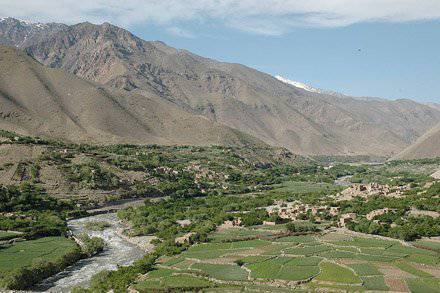
Despite the fact that by the beginning of 1982 the number of OKSVA reached more than 85 thousand people and at its disposal was about 600 tanks, 1500 infantry fighting vehicles, 2900 armored personnel carriers, about 400 planes and helicopters, 500 guns, Soviet troops suffered heavy losses, only 3 thousand people were killed. At the same time, OKSVA controlled practically all large cities, airfields and highways, 862 outposts were created, on which more than 40 thousand contingent troops served.
It became increasingly obvious for the Soviet command that it would not be possible for the 40 army to defeat the Mujahideen in a short time. A new approach was needed, new forms of fighting the enemy in the high mountains. First of all, it was necessary to destroy the basic areas of the opposition. According to the method of organization and implementation of such operations were the most complex and not always effective. Nevertheless, the Soviet leadership, who had no opportunity to influence the military-strategic situation in the country in a different way, placed emphasis on their conduct. The fact is that in Afghanistan, the struggle was conducted by scattered Islamist parties, groups and detachments, which led to the emergence of a special category of field commanders on the ground who controlled certain zones and gained considerable weight and influence among the local population.
One of these field commanders was Ahmad Shah, nicknamed Masood, which means “happy”. Subsequently, he became a national hero of Afghanistan. Having managed to strengthen in the valley of the Panjsher River with the support of local Tajiks, Masud created practically his own mountain republic. From the very beginning of the entry of the Soviet troops, its detachments committed sabotage and bombarded the strategic highway Termez-Kabul and the Salang Pass, which are important for the 40 Army. In 1980 – 1981 Four military operations were carried out against Ahmad Shah, but they did not achieve their goals.
Order: Hack Panjshir
The Panjsher Valley (about 250 km in length) was the connecting link of northeastern Afghanistan with Pakistan. The defense of the Mujahideen in the valley was made up of individual strongholds on the dominant heights, in the gorges, in the fortresses. As a rule, the stronghold had up to 20 fighters and several firing points. The whole valley was prepared in engineering. There was practically no free space through which troops could move freely. The whole area was sweeping, and from different levels and directions. Especially skillfully was organized by the air defense system - 120 machine guns DShK throughout the depth of Panjshir. Carefully disguised air defense weapons were located near crevices, caves. Highly located caves were used to shelter the population and outgoing militant groups. There were also warehouses weapons, ammunition, food. All this allowed the rebels to fully control the valley area.
Preparations for the operation began at the end of April 1982, with a scrupulous study of the area of upcoming actions. Within ten days, aerial photography was taken about 2 thousand square meters. km of the Panjshera valley, the Shahran region and adjacent parts of the terrain. As a result, 95 detachments and groups of Mujahideen numbering up to 3 thousand people, 16 Islamic committees, about 100 air defense guns, two centers for the preparation of reserves and many warehouses were found.
Major-General N. G. Ter-Grigoryants, Chief of Staff of the 40 Army, was appointed head of the operation. The army commander, Major-General V. F. Ermakov, had just arrived in Afghanistan and had not yet had any combat experience. General leadership was entrusted to the commander of the Turkestan Military District, Colonel-General Yu. P. Maksimov, and the task force of the USSR Ministry of Defense in Afghanistan assumed the coordination of the actions of the Soviet and government forces.
Main strike with support aviation and artillery was supposed to inflict in the direction of Rukh, Pasi Shahi-Mardan along the Panjshir river valley, and the second, distracting blow, on the Gorband valley in the direction of Jabal-us-Siraj, Bamyan.
To dismember the Mujahideen defense system, it was planned to land tactical airborne assault forces on the 20 Soviet and Afghan battalions in three zones in the Panjsher valley in order to tear the defense apart, deprive it of solidity and crush the enemy alternately, with simultaneous actions of 108 units along the river valley. By the third or fourth day of the operation, with the support of aviation, it was planned to complete the destruction of the identified insurgent formations in the three zones of the Panjshir valley.
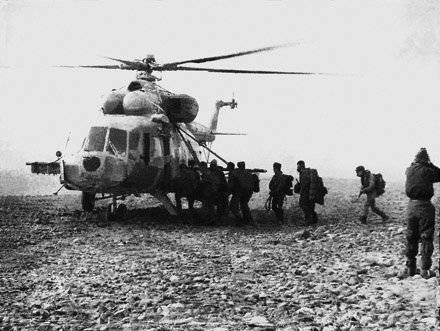
To participate in the operation from OXVA, units of the 108, 201 of the motorized rifle divisions and 103 of the airborne divisions, 66 of the separate motorized rifle brigade, 191 and 860 of the individual motorized rifle and 345 of the separate parachute regiment were involved. . The Afghan army allocated units of three infantry divisions, the Commandos brigade, a separate regiment, and Tsaranda and Hud units.
In total, about 12 thousand people were to be involved in the operation, of which 4 thousand 200 were involved in tactical airborne assault forces. A total of 36 battalions (20 Afghan and 16 Soviet) were involved, more than 320 units of armored vehicles: tanks (BMP, BTR), 155 guns and mortars, 137 helicopters, 26 aircraft. For purposes of secrecy and secrecy, the plan of the operation was developed only by people from the headquarters of the 40 Army.
In order to mislead the enemy, a plan was discussed, according to which hostilities were envisaged in the direction of the Gorband Gorge (in the opposite direction from Panjshir). The name “Panjsher” was forbidden to be used even in conversations, and on all plans and documents Panjshir was replaced by Bamian.
In order to disorient the enemy, demonstrative distracting actions were carried out: concentration of troops at the entrance to the Gorband valley, powerful air strikes and artillery in the direction of Bamiyan. The rebels began to transfer additional forces to Gorband from adjacent areas, including from Panjshir.
Meanwhile, at the headquarters of the 40 Army, the commanders of the armed forces, the chiefs of services, the commanders of the formations, units and divisions, the officers of the operational groups, the participants in the upcoming actions were preparing for the operation, studying the plan for the upcoming military operations, the combat missions, the order of operations of the troops in the operation. On a large-scale model of the terrain, interaction between the formations, units of the armed forces, special forces and the air force of the army was worked out.
Depending on the height of the landing sites above sea level, they were divided into four categories. Eighth Mi-1500 helicopters could deliver eight people onboard to the first category up to 8 m, seven more onboard the second (over 1500 and up to 1800 m), five on the third platform (over 1800 and up to 2000 m) - on the fourth ( over 2000 m) - only four people. Especially carefully prepared servicemen belonging to the landed groups. They were equipped in accordance with the “Instructions for equipping paratroopers” prepared in advance by the army headquarters. According to the plan of training, tactical tactical exercises, combat shooting exercises, helicopter landing and disembarkation exercises, and integrated staff radio training in the army-division-regiment-battalion division were conducted in units.
From 5 to 10, aerial reconnaissance was organized in May with the participation of key officials of the formations and units involved in the operation.
By the end of May NUMX, the airborne units from Kabul, Ghazni, Jalalabad, Kunduz focused on the Bagram airfield, and the command post of the operational group of the 15 Army was also located there. Part of the 40-th MSD took positions at the entrance to the gorge in the area of Jabal, Ussarj and Charikar.
15 – 16 In May, parts of the 350 paradigm 103 VDD began to carry out distracting activities in the valley of the Gorband River.
Lead May. Storming Panjshira
On the night of May 16, eleven reconnaissance companies almost without a fight captured all the main dominant heights at the entrance to the Panjsher Valley. The next night, the 3 battalion of the 177-th MRP, together with the reconnaissance units, captured important heights to a depth of 10 km from the entrance to the valley and entrenched themselves on them, forming the forward bridgehead.
On May 2, 17, two hours before dawn, the formation commanders brought the task of fighting in Panjshir to the Afghan forces. From 4 hours of the morning according to the combat plan, after powerful air strikes and artillery fire of the part of the 108 division, they launched an offensive. The 180 and 181 battalion battalions advanced on foot in altitude to the left and right of Panjshir at a distance of 5 km from the center of the valley under cover of armored vehicles.
In 5, one battalion from the 191-th Omsp and 14-th PD were landed as assault forces in the areas of Ruhi and Marishtany. Part of the troops were fixed on the heights captured from the enemy, and the main forces blocked the settlements. Taken aback the enemy sought to slip out of the encirclement, even engaging in melee fights. In the Ruhi area, there was considerable resistance to the landing. In the first minutes of the landing, two Mi-8 mt helicopters, Major Yu. Grudinkin and Captain A. Sadokhin, were shot down, five helicopters were damaged. 14 pilots and paratroopers were killed, 13 was injured, among them the chief air officer of the 40 Army, Lieutenant Colonel K. Shevelev was killed.
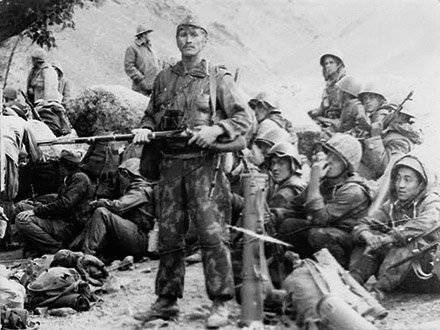
Part of 108-th MSD, overcoming the stubborn resistance of the rebels, continued to move forward. The fighters with fire of all available means suppressed the firing points and ensured the actions of the detachment to ensure movement of the division. The speed of advance of the Ltd. on mined areas with debris and destruction was low and did not exceed 2 km / h. Because of this, the speed of the advance of the avant-garde and the column of the main forces on the first day averaged 1 – 2 km / h.
The reinforced 2 battalion of the 180 squadron (commander — Hero of the Soviet Union, Captain R. S. Aushev), acting as an advance detachment of the division, began to move forward rapidly in the direction of Ruhi, Bazarak under the cover of 177 battalions, 180 th and 181 th mas, operating on the flanks. He was able, with the support of aviation and artillery, to capture all the dominant heights and for three days to repel the attacks of the Mujahideen, ensuring the landing of assault forces. With the onset of darkness, the Mujahideen repeatedly tried to storm the heights, turning into counterattacks in large groups, shouting at the same time Islamic spells.
After the firing of the landing sites, six more battalions landed during the first day of operation in four zones to a depth of 40 to 100 (two MSNs of 191, OMSB, 66, IIB, two 14 units, 11, XB front, a total of over 1200 people). On the second day - four more, on the third - two, on the fourth - two. Successful operations of the paratroopers contributed to the advance of ground forces on Anavu in three directions: along the only road along the riverbed and along the mountain gorges from the north and south.
The troops seized the gorges, as a rule, on foot, after which an armored group was introduced there, moving along the bed of a shallow river or along a roadside. The resistance of the enemy was suppressed by helicopters, artillery and mortar fire. At the same time, the subunits created a fire bag by traversing the crests of heights.
To increase efforts in the morning 18 in May in the area of Mata were landed on one battalion from the Soviet and Afghan troops, who, having captured landing sites, rapidly moving to the heights, knocked the enemy down from the dominant heights and occupied them. By the evening of the same day, after four flights, army aviation landed four battalions in the third and then in the second zone, two of them Soviet and two Afghan, in total up to 1000 people. The troops captured a significant area by area, forming a wedge between the third and first zones, and thus prevented the enemy’s maneuver, which was already largely dismembered and began to lose control.
19 May landed two battalions of Soviet and Afghan troops in the area of Astana and the same forces in the area of Mata.
The next day, two Soviet and two Afghan battalions were landed at a depth of about 100 km from the entrance to the Panjshir Gorge. In total, thus, within four days, eighteen battalions were deployed to the enemy rear with the help of helicopters. But the enemy continued stubborn resistance and moved to a positional defense, focusing on maintaining the dominant heights. As the defense system was destroyed, the mojahedin also changed the tactics of the struggle, moving from defense to maneuvering actions and back. The Soviet and Afghan troops had to slowly drive out the enemy, while suffering heavy losses in manpower and especially in technology.
Only by May 21 did Soviet and Afghan troops reach the settlements of Mata and Pasi-Shahi-Mardan and join up with paratroopers. After the capture of the main road to the entire depth of the Panjsher Valley, armored groups could be entered on armored personnel carriers.
22 in May in the area of Evim in 220 km from Bagram, a landing party (about 600 people) consisting of two battalions of Soviet and Afghan troops was landed on the site of the main junction of caravan roads from Pakistan, which supplied Panjshir with everything necessary. This landing was made possible by the flight of 32 helicopters commanded by Colonel V. Ye. Pavlov through the Hindu Kush ranges at an altitude of 4600 – 4700 m at the border of the extreme capabilities of the Mi-8 MT helicopter.
The landing of the battalions took place in extremely difficult conditions, under enemy fire.
The paratroopers, carrying with them three ammunition sets, within a day of the battle requested additional ammunition. Within three days, 30 helicopters, making three flights a day, sent about 180 tons of ammunition and 30 tons of food to the Evim area. With this intensity of flight, the pilots had to make up to 7 sorties per day, with a total 9 flight time for army and 4 hours for front-line aviation.
By May 24, Soviet troops managed to gain a foothold in the captured area and cut off the most important communications of the Mujahideen in the area of Evim and Shahran.
As a result of the fighting in May 1982, the whole Panjsher valley was under the control of the Soviet and Afghan troops. In early June, the Soviet command began to withdraw troops to the points of permanent deployment. At some points of Panjshir, Afghan garrisons were abandoned.
For the fifth time conquered Panjshir
In 1982, the Soviet and Afghan forces succeeded in capturing the territory of the Panjshir Gorge with the involvement of great forces and at the cost of tremendous efforts.
The main control center and the base of Ahmad Shah Masud in the Parandekh gorge, the main Islamic committee of the Panjsher gorge, the provinces of Parwan and Kapisa, the combined headquarters of the zonal Islamic committees in Astana, the 10 headquarters of the zonal Islamic committees, a large number of ammunition, various weapons, equipment were destroyed. , warehouses, radio communications.
Many valuable documents fell into the hands of the winners: the program of the Mujahideen’s struggle against the Afghan and Soviet troops in the coming years; structural diagram of the leadership of the rebel movement; documents of combat groups operating on the Salang – Kabul route in the green zone of Parwan province; lists of persons subject to physical destruction in the “Center” zone; the 113 list of active members of the counter-revolutionary underground in Kabul; 5200 lists of members of the IOA party with photographs and questionnaires; diary of Ahmad Shah.
About 200 prisoners were also captured, and they were interrogated at the place of capture. Of these, more than 120 was interrogated, and 95 gave evidence that confirmed the presence of more than 200 objects.
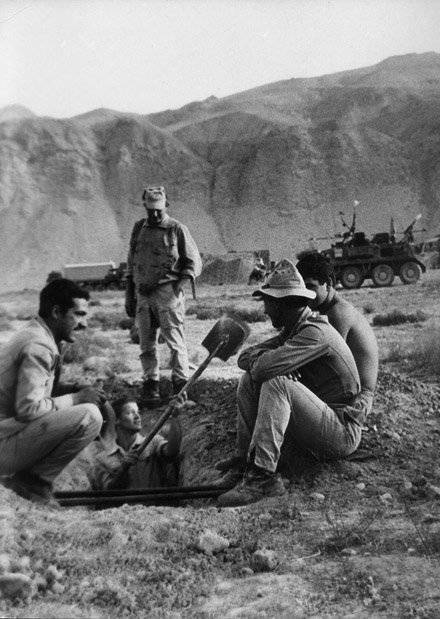
To achieve success, Soviet troops relied on the sudden and massive use of assault forces, the rapid advance of troops along the valley, active operations of aviation and continuous support of artillery.
Thus, the aircraft carried out 5210 sorties with a total 5579 flight hours. In total, 10 549 aerial bombs and 61 297 NAR, 415 226 ammunition of all calibres, 559 missiles "Sturm B" were used during the operation. All the combat work of aviation took place with the powerful countering of the air defense of the Mujahideen, and in already liberated areas. May 27 during a strike on the target near the village of Avund was shot down by Captain A. Sribnoy's MiG-21 bis, May Captain V. Voitekhovich’s Mi-28 in the Ruhi area - May. A total of 24 aircraft and helicopters were damaged, i.e. more than 108%. Three helicopters and one aircraft were lost forever, and 80 helicopters and two aircraft suffered heavy damage.
During the operation, the 50 pilots of Colonel V.E. Pavlov and 27 Colonel V.S. Kota distinguished themselves especially by pilots.
The success of the entire operation was largely dependent on artillery. Each day of the fighting began with artillery preparation, which usually lasted 30 min. Each battalion was supported by fire from one or two artillery battalions. The ammunition consumption during the artillery preparation period was 200 – 600 projectiles per gun or mortar.
But the main burden of the operation was carried on their shoulders by units of motorized infantry and paratroopers. It was they who, under the most difficult conditions of the highlands, under constant enemy fire, often in the absence of water and food, acted decisively and effectively in the forward detachments and airborne assault forces.
Since the roads and the main directions were mined and covered with rebel fire, the unit commanders successfully used on foot along the ridges of heights and mountain slopes of motorized riflemen who imperceptibly advanced to the positions of the Mujahideen, used natural shelters, causing sudden blows. The 180 fighter squadron 108 MSD, commanded by Lieutenant Colonel E.V. Vysotsky, and 191 Omsp, commanded by the deputy commander for political affairs Major A.Ya. Oparin, distinguished here.
During the operation, landings were used as never before. Their total number was about 4200 people. The landing of the battalions took place in extremely difficult conditions, under enemy fire. The battalions landed in the mountains engaged in bloody battles with the Mujahideen, who often ended in melee. In these battles, the fighters of the 345 gv.opdp commanded by Lieutenant Colonel Yu. V. Kuznetsov and 103 gv.vdd commanded by Major-General A. E. Slusar distinguished themselves.
But the rebels fought with bitterness. As the troops moved, the nature of their actions changed. The detachments successfully counterattacked in the most uncomfortable moments for the Soviet troops and in the most vulnerable areas. With the support of local residents, Ahmad Shah skillfully led the actions of his troops, timely maneuvering and removing them from the blows of the Soviet troops. Masterfully Ahmad Shah built a system of fire and engineering barriers at Panjshir. He knew the terrain well and made the most of the advantages of the mountains in building defense. Overcoming this defense, the Soviet troops lost 93 man killed and 343 wounded.
After the operation in Panjshir, Masood faced a great shortage of food, ammunition and equipment. He praised the actions of the Soviet troops. The following words belong to him: “If Allah wanted me to surrender to the vanquished, I would surrender only to the Russians.”
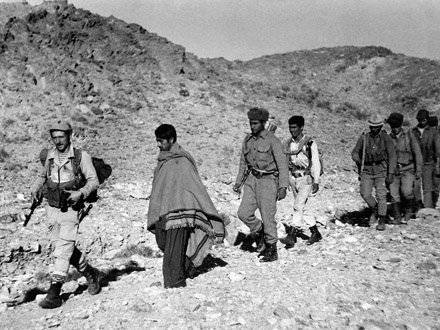
Immediately after the operation, the government of Karmal began to establish a new government in Panjshir, appointing its representatives to the so-called organdry of people's power in key posts. But over time, the rebels began to return to the Panjshir Valley, intending to continue their resistance. The garrisons of the Afghan troops and the new-power org. Of the new power stationed in the settlements in the north-east of the valley began to be attacked. Soon they were forced to leave the valley. In response, the Soviet command took an unprecedented step by deploying a separate special forces detachment of the GRU command in Panjshir under the command of Lieutenant Colonel B. Kerimbayev - Kara Major or the Black Major, as the Afghans called it. The 177 squad of June 12 of the year, which was introduced just six months ago, entered Afghanistan and started fighting immediately, seizing all the dominant heights ...
Punjsher after surgery
The Panjshir operation 1982 of the year was the quintessence of combat experience gained during two years of fighting in Afghanistan. It became clear that only a careful organization of the operation carried out over a large area and for a long time using a large number of forces and means can guarantee success. The experience of this operation was summarized and influenced the planning and combat use of the Soviet troops in further operations of the Afghan war. In the course of this operation, commanders, soldiers and sergeants, officers and generals of the 40 Army showed courage and bravery, heroism and self-sacrifice. Several thousand of them were awarded orders and medals, and to Colonel-General Yu. P. Maksimov, Colonels V. E. Pavlov, V. S. Kot, Lieutenant-Colonels E. V. Vysotsky, Yu. V. Kuznetsov, Major A. Ya. Oparin (posthumously) was awarded the title Hero of the Soviet Union. Major-Generals N. G. Ter-Grigoriants and A. E. Slyusar were honored with the Order of Lenin.
Ahmad Shah Masoud was forced in January 1983 to go to an armistice with the Soviet troops, which lasted until April 1984.
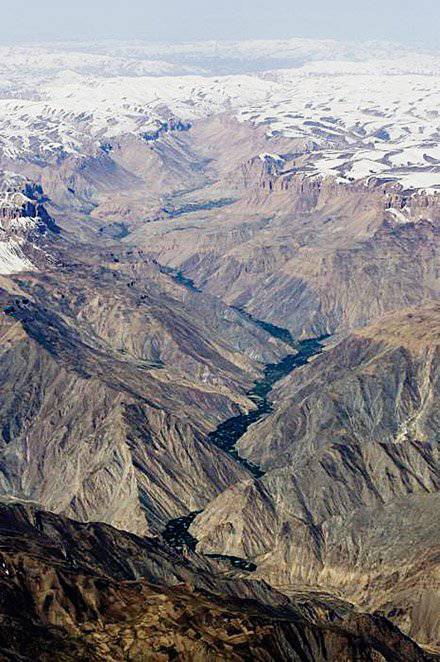
The Soviet command after this operation, on the one hand, focused on strengthening the firepower. So, already in the seventh 1984 operation of the year, 200 aircraft were used in Panjshir, including heavy bombers, 190 helicopters and 39 batteries. On the other hand, serious doubts arose about the effectiveness of large-scale operations in a territory with a hostile population.
Ahmad Shah concentrated all his efforts on combating the Karmal regime, on intensifying intelligence and introducing agents not only in the government and military Afghan structures, but also among Soviet military personnel. And although at least four major operations were still carried out against him, Ahmad Shah never again allowed himself to be taken by surprise and incur such losses as in May 1982.
Information